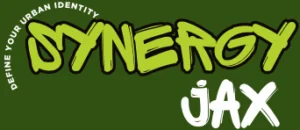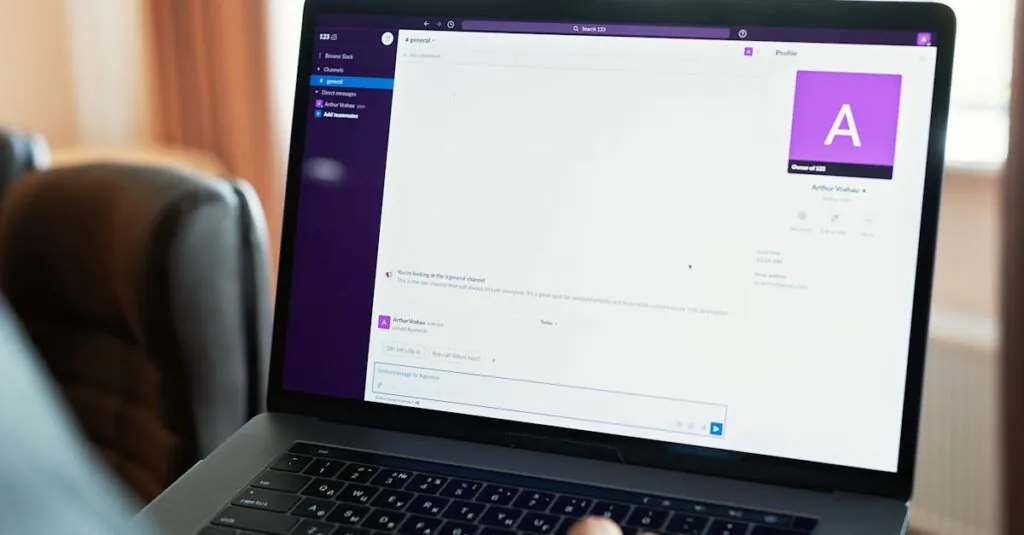In a world where everyone seems to be a tech genius, the idea of building a web app without writing a single line of code sounds like a magician’s trick. But fear not, because no code platforms are here to turn the impossible into a delightful reality. Imagine crafting your dream app while sipping coffee in your pajamas—sounds tempting, right?
Table of Contents
ToggleOverview of No Code Platforms
No code platforms empower users to create web applications without needing any programming expertise. Such platforms streamline the development process, making it accessible to entrepreneurs, small business owners, and hobbyists. Expectations of traditional programming are bypassed, as drag-and-drop interfaces replace complex coding languages.
These tools often come with pre-built templates and customizable components. Users can quickly adapt these resources to fit their specific needs, saving time and reducing costs associated with hiring developers. Integrating features like payment processing, databases, and user authentication happens with a few clicks.
Key advantages include rapid prototyping and deployment. A significant reduction in time from concept to completion allows for quicker feedback and iterative improvements. Businesses can launch minimum viable products to test market assumptions efficiently.
Popular no code platforms encompass several options. Each platform supports different functionalities and benefits:
| Platform | Key Features |
|---|---|
| Bubble | Visual programming, responsive design |
| Adalo | Mobile app creation, simple UI design |
| Webflow | Custom web design, hosting included |
| Glide | Spreadsheet-based app development |
| Airtable | Database functionalities, project tracking |
These platforms cater to various needs, making it easy to select the right fit based on project requirements. Utilizing these resources, individuals and teams can transform ideas into functional applications without barriers, fostering innovation and creativity.
Key Features of No Code Platforms
No-code platforms provide users with key features that streamline web application development. These tools simplify the process significantly, enabling quick and effective app creation.
User Interface Design
Drag-and-drop functionality characterizes user interface design in no-code platforms. Visually appealing components ensure a seamless user experience. Widgets and templates allow customization without technical expertise. Responsive design options cater to different devices, making apps versatile. Many platforms offer design libraries, assisting users in maintaining brand consistency across applications.
Integration Capabilities
Many no-code platforms excel in integration capabilities. Pre-built connectors allow connections with third-party applications, enhancing functionality. API integrations facilitate data sharing, streamlining workflows across tools. Users can integrate payment gateways, marketing tools, and analytics services easily. Flexibility in integration fosters a cohesive environment for users, making it simpler to manage all aspects of their projects.
Scalability and Performance
Scalability remains a vital feature of top no-code platforms. Users can start small, then expand their applications as needed. Performance optimization ensures applications run efficiently under increased traffic. Cloud infrastructure supports scaling without requiring extensive resources. Robust analytics tools offer insights, enabling data-driven decisions for future enhancements.
Top No Code Platforms to Build Web App
Several no-code platforms offer unique features to help users bring their web application ideas to life. Here are three popular choices.
Platform 1: Features and Benefits
Bubble stands out for its versatility and robust functionality. This platform enables users to create fully customizable applications without writing code. Users benefit from responsive design capabilities, allowing apps to function seamlessly across devices. Bubble also provides extensive plugin support, enhancing functionality with third-party integrations. Additionally, its built-in database management systems enable immediate data-driven decision-making. Rapid prototyping options lead to quicker iterations, making it an ideal choice for entrepreneurs focusing on market fit.
Platform 2: Features and Benefits
Adalo excels in building intuitive mobile applications. The platform prioritizes user experience with an easy-to-navigate interface and drag-and-drop design. Users appreciate its pre-built templates tailored for various industries, speeding up development time. Adalo supports real-time collaboration, allowing teams to work together effectively. Furthermore, its integration with external data sources enhances app functionality, turning ideas into polished products. Adalo’s focus on mobile-first development attracts small business owners looking to reach their customers on the go.
Platform 3: Features and Benefits
Webflow offers powerful visual design tools for creating responsive websites and web applications. Its standout feature is the ability to design, build, and launch all in one place. Users enjoy the flexibility to customize layouts without limitations, benefiting from a strong design-first approach. Webflow also combines content management features with e-commerce capabilities, making it excellent for businesses aiming to sell online. Furthermore, the platform provides hosting and analytics in a single solution, simplifying the management process for users. This comprehensive toolset appeals to creators wanting to maintain control over their branding and online presence.
Choosing the Right No Code Platform
Selecting a no-code platform requires careful consideration of several factors. Assessing project needs stands as a crucial first step.
Assessing Your Project Needs
Defining the scope of the project shapes platform choice. Consider whether the focus is on mobile, web, or both. Evaluating required features helps address specific objectives. Some users might prioritize advanced functionalities, while others seek simplicity. Determine the expected user experience, which influences design and interactive elements. Matching the platform’s strengths with project goals ensures efficient development.
Budget Considerations
Establishing a budget provides a framework for selection. Various platforms offer different pricing structures, from free tiers to premium plans. Assessing long-term costs is vital if the project scales. Additional expenses may arise from integrations, plugins, or template purchases. Evaluating pricing against features helps determine overall value. Prioritizing cost-effectiveness will optimize return on investment while meeting project demands.
No-code platforms are revolutionizing the way individuals approach web application development. They empower users to transform ideas into reality without the need for coding expertise. By leveraging the unique features of platforms like Bubble, Adalo, Webflow, Glide, and Airtable, users can create tailored applications that meet their specific needs.
As the demand for rapid development and innovation grows, these platforms provide the tools necessary for entrepreneurs and hobbyists alike. With the ability to prototype quickly and adapt as needed, users can stay ahead in a competitive landscape. Embracing no-code solutions is not just a trend; it’s a strategic move towards efficient and accessible app development.










